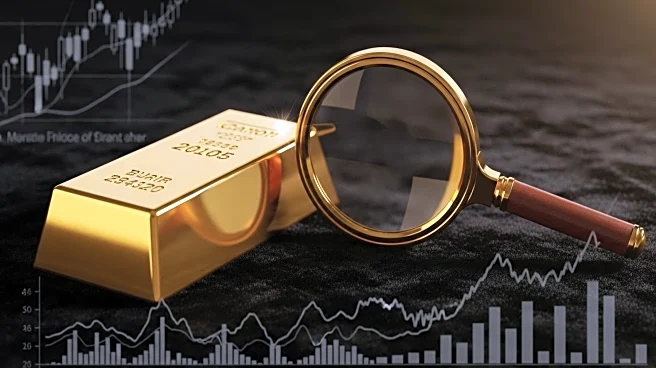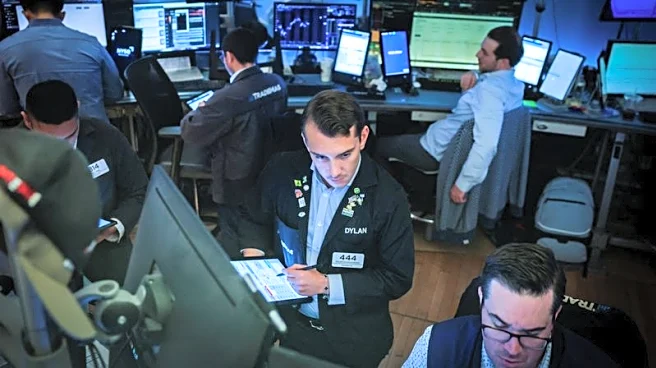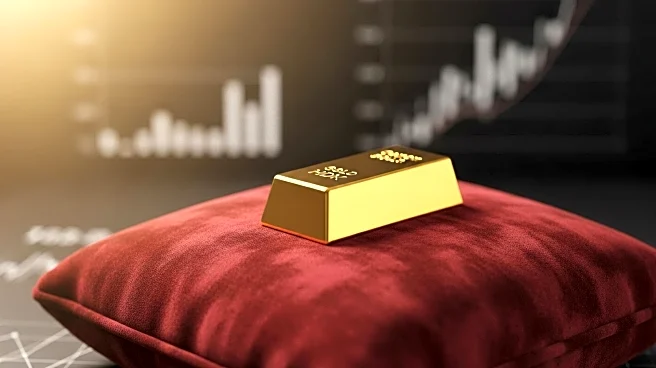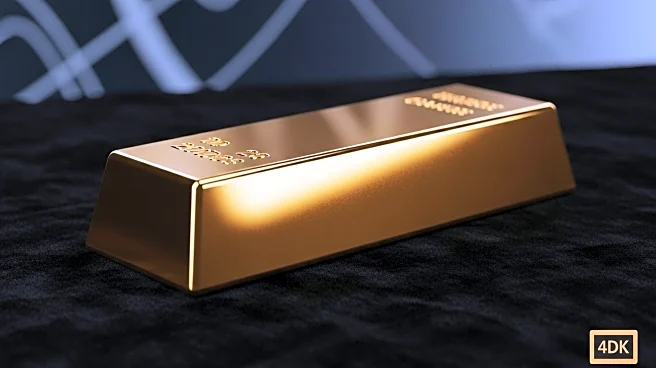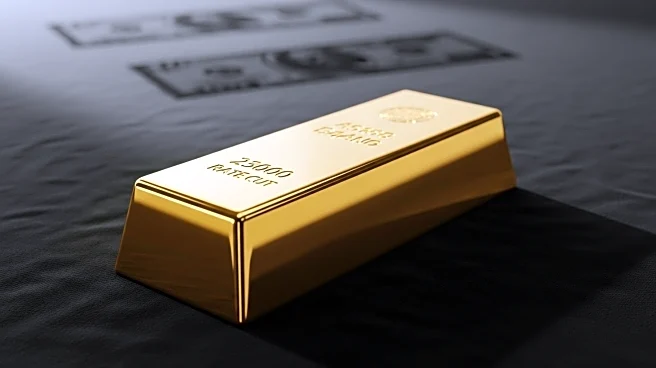What's Happening?
Gold prices have surged to record levels, driven by expectations of U.S. Federal Reserve interest rate cuts, concerns over Fed independence, and strong investor and central bank demand. Spot gold reached a record high of $3,524.27, with analysts predicting it could rise to between $3,600 and $3,900 in the near to medium term, potentially testing $4,000 in 2026 if economic and geopolitical uncertainties persist. The dollar has weakened nearly 11% since President Trump returned to office, making gold cheaper for holders of other currencies. Trump's criticism of Fed Chair Jerome Powell and attempts to remove Governor Lisa Cook have raised concerns about Fed independence, further boosting gold purchases.
Why It's Important?
The rally in gold prices reflects broader economic and geopolitical uncertainties, including tariff-related economic concerns and security issues in the Middle East and between Russia and Ukraine. Central banks, particularly in developing countries, are increasing their gold reserves, reducing dollar holdings. This shift in reserve composition highlights a growing preference for gold as a safe-haven asset amid fears of interference with the U.S. Federal Reserve and doubts about the dollar's status. Gold-backed ETFs have also seen significant inflows, indicating strong investor confidence in gold's long-term value.
What's Next?
Gold prices are expected to continue rising as central banks plan to increase gold holdings over the next five years. The potential for further interference with the Federal Reserve and ongoing geopolitical tensions could sustain gold's appeal as a safe-haven asset. Investors and analysts will closely watch economic indicators and Fed policy decisions for future price movements.
